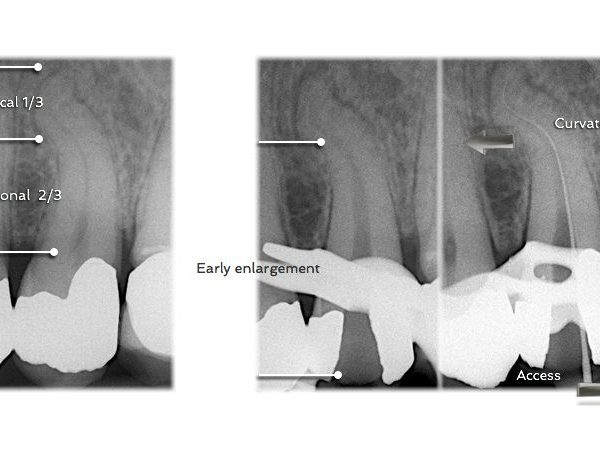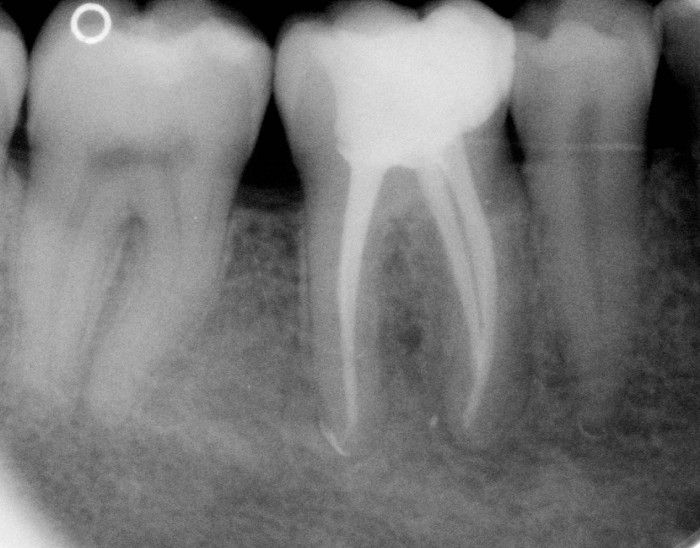
The Style Italiano Endodontics Philosophy in Practice
16/06/2017
Paolo Generali
Warning: Undefined variable $post in /var/www/vhosts/styleitaliano-endodontics.org/endodontics.styleitaliano.org/wp-content/plugins/oxygen/component-framework/components/classes/code-block.class.php(133) : eval()'d code on line 2
Warning: Attempt to read property "ID" on null in /var/www/vhosts/styleitaliano-endodontics.org/endodontics.styleitaliano.org/wp-content/plugins/oxygen/component-framework/components/classes/code-block.class.php(133) : eval()'d code on line 2
The philosophy of StyleItaliano Endodontics has extensively been treated in a lot of articles previously published on this web site, by Pierre Machtou, Massimo Giovarruscio, Fabio Gorni and others. Feasible, Teachable and Repeatable techniques can make a successful endodontic practice more easy. In this article, with the help of some clinical cases, the essential steps for a predictable endodontic treatment will be addressed.

Fig. 1
This is an example of a successful endodontic treatment, performed 30 years ago.

Fig. 2
Hours of work, with almost cylindrical, stainess-steel hand instruments, were necessary to conically shape the root canals, allowing irrigants to reach the bacterial flora, and thus reducing it to a level that would be compatible with periapical health. It still works.
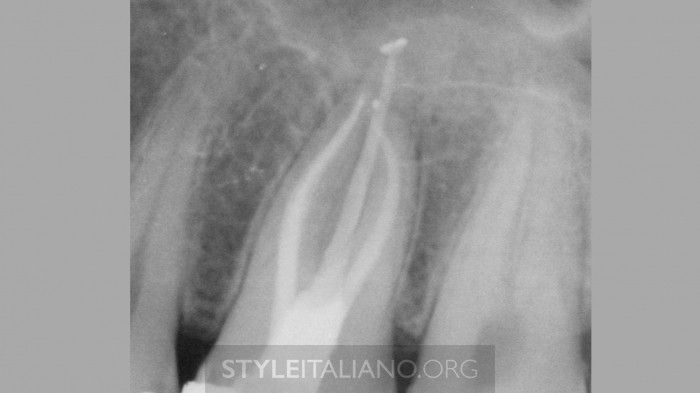
Fig. 3
A contemporary endodontic treatment. Shaping has been performed with rotary instruments, at 300 rpm. This probably means that 30 seconds of mechanical shaping equals 150 manual strokes with hand files. Treatment time has been reduced dramatically, along with the efforts required.
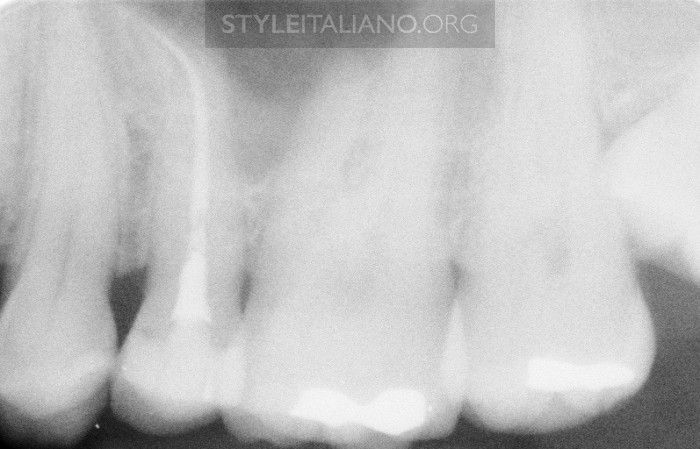
Fig. 4
Another contemporary endodontic treatment, performed by a colleague. A curvature has been correctly followed with a #25 reciprocating file, but something went wrong, and the patient still complains of pain upon biting.
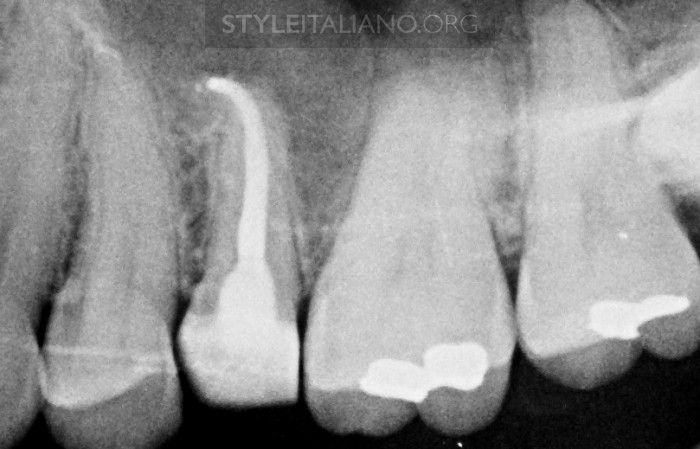
Fig. 5
What went wrong were diameter determination and taper. This root canal was much wider than #25. A #40 instrument was needed to properly clean the apex, and to allow space for irrigants. But the curvature needs to be respected, so we need exceptional instruments, made with the new alloys that give us great flexibility even at wide diameters.
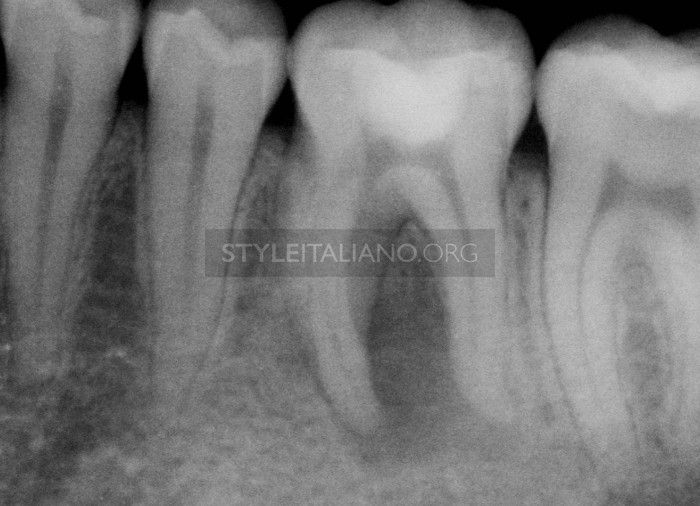
Fig. 6
A wide endodontic lesion often means a huge bacterial load. Thorough shaping is needed, up to wide diameteters and greater tapers.
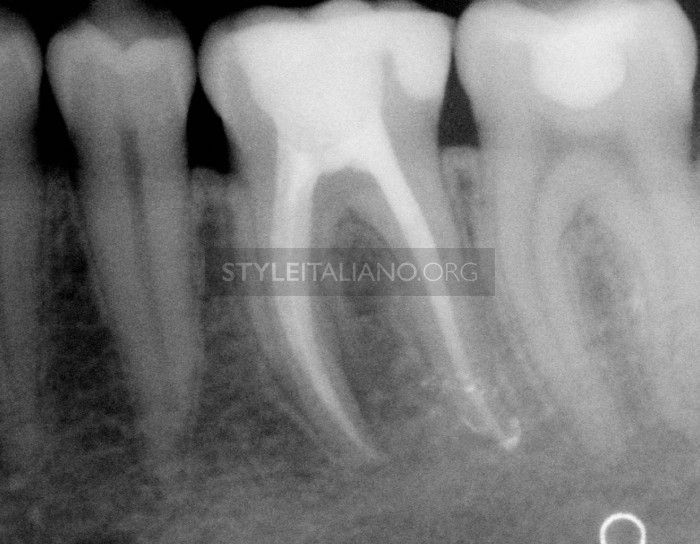
Fig. 7
The task is accomplished with larger instruments, still flexible thanks to their metallurgy.

Fig. 8
Metallurgic properties of endodontic instruments are continuously improving. A new glide path instrument can follow abrupt curvatures.
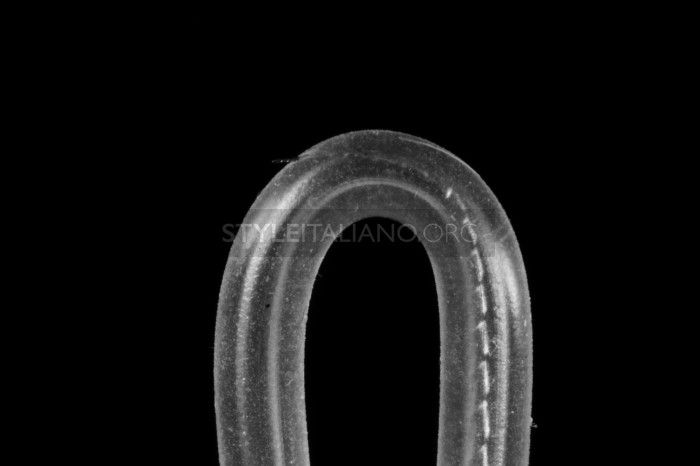
Fig. 9
Older alloys cannot perform these tasks so easily, and need much more attention.

Fig. 10
Conclusions
These cases have been collected to show that the "protocols "suggested" by producers are not acceptable in 100% of the clinical cases. The StyleItaliano Endodontics Phylosophy, on the other hand, allows to use any endodontic instrument to perform a specific task. Access cavity, pre-flaring, scouting, shaping, gauging and apical finishing are the necessary steps that should be always kept in mind. In some cases, a single file technique could be enough to perform all these tasks. In more demanding cases, every step should be performed with a dedicated instrument, rotary or reciprocating. Glide path is the critical step, and a lot of dedicated instruments are now available; their use is of utmost importance in difficult cases. Manual instrumentation with stainless steel files is much more difficult to perform without the risk of altering canal anatomy.
Bibliography
Pasqualini D, Mollo L, Scotti N, Cantatore G, Castellucci A, Migliaretti G, Berutti E. Postoperative pain after manual and mechanical glide path: A randomized clinical trial. J. Endod. 2012; 38:32-6.
de Oliveira Alves V, da Silveira Bueno CE, Cunha RS, et al. Comparison among manual instruments and PathFile and Mtwo rotary instruments to create a glide path in the root canal preparation of curved canals. J. Endod. 2012; 38:117-20
Patino PV, Biedma BM, Liebana CR, Cantatore G, Bahillo JG. The influence of a manual glide path on the separation rate of NiTi rotary instruments. J. Endod. 2005; 31:1146.
Ruddle CJ. Ch. 8, Cleaning and shaping root canal systems. In Pathways of the Pulp, 8th ed., Cohen S, Burns RC, eds. St. Louis: Mosby, pp. 231-291, 2002
West J (2010) The Endodontic Glide path: Secrets to rotary success. Dentistry Today 29(9):86, 88, 9


